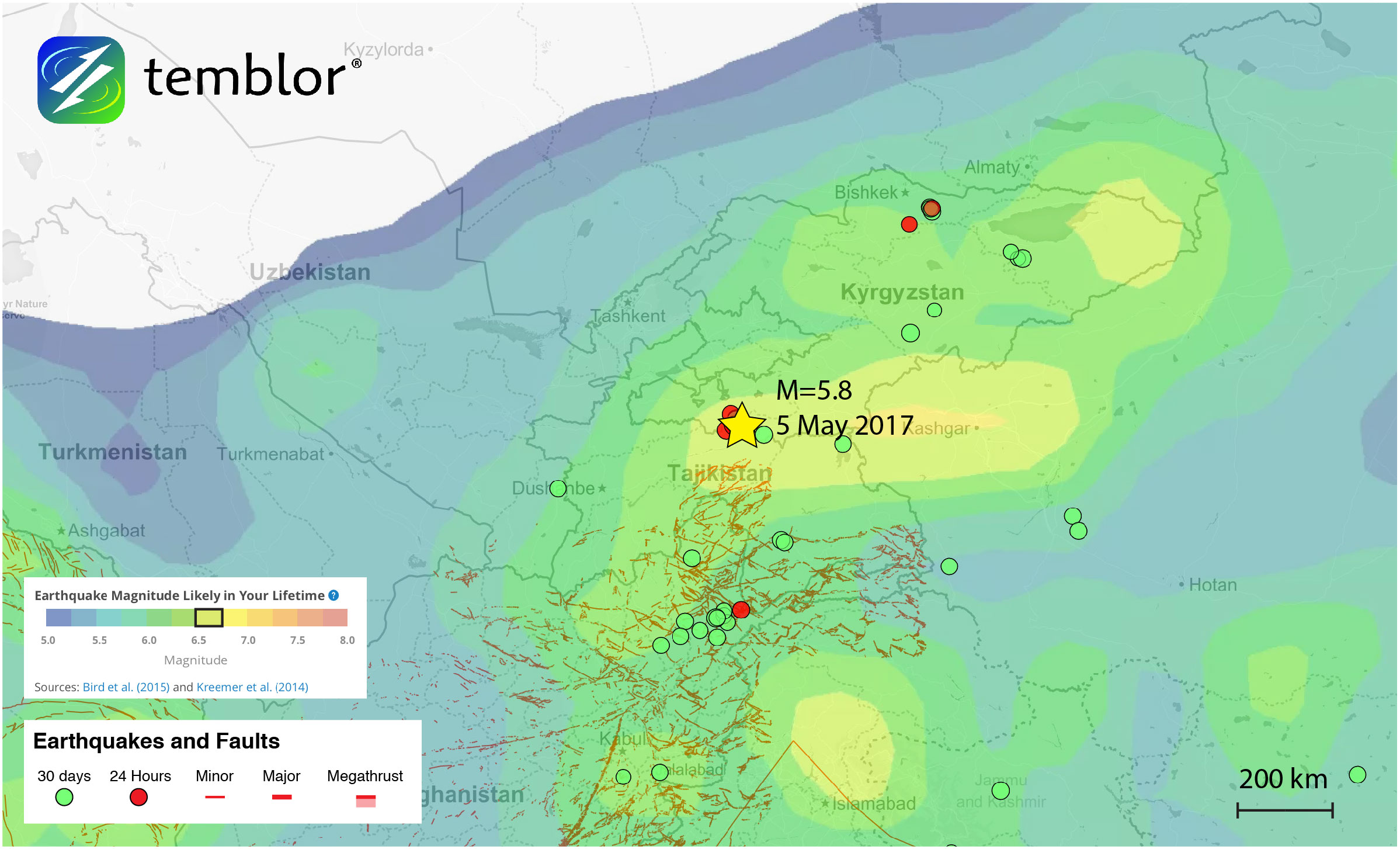By David Jacobson, Temblor

At 10:09 a.m. local time, a M=5.8 earthquake struck northern Tajikistan near the border with Kyrgyzstan. The quake occurred at a shallow depth of 10 km, and registered strong shaking near the epicenter. This part of Central Asia is not densely populated due to mountainous terrain. Therefore, not many people were exposed to shaking, and the USGS estimates that there should be no fatalities and economic losses should remain minimal. Having said that, reports are still coming in, and should circumstances change, we will update this post.
Today’s earthquake is an aftershock of a M=5.9 quake that occurred two days ago, 1 km to the south. This quake also resulted in strong shaking, and resulted in little to no damage. Even though there is no focal mechanism for today’s earthquake, the M=5.9 earthquake two days ago had components of strike-slip and thrust motion. Given the close proximity of these quakes, it is likely that today’s quake slipped on a similar plane.
Few people know that this part of Central Asia is highly seismically active. The majority of the quakes in this region occur due to India’s collision with Asia, and Africa pushing towards Iran and Afghanistan. This combination of movement often results in compressional earthquakes, though strike-slip quakes also occur, including a M=7.2 earthquake in Tajikistan approximately 150 km to the southeast of the recent events. While Central Asia is seismically active, this region along the border has not seen large earthquakes recently, and according to the USGS catalog, the majority of M=6+ earthquakes occur to the south.

Based on global strain rates and seismicity since 1977, the recent earthquakes in Tajikistan should not be considered surprising. Using the Global Earthquake Activity rate (GEAR) model, which is available in Temblor, we can see the likely earthquake magnitude in your lifetime anywhere on earth. This model suggests that M=6.5 earthquake are likely for much of the part of Central Asia. Therefore, an earthquake five time bigger than today’s event is possible for the area. Such a quake would likely cause much more damage and disruption that the recent seismicity has. If any new information comes in, or should there be any more large aftershocks we will update this post.
Reference
USGS
- Earthquake science illuminates landslide behavior - June 13, 2025
- Destruction and Transformation: Lessons learned from the 2015 Gorkha, Nepal, earthquake - April 25, 2025
- Knock, knock, knocking on your door – the Julian earthquake in southern California issues reminder to be prepared - April 24, 2025
